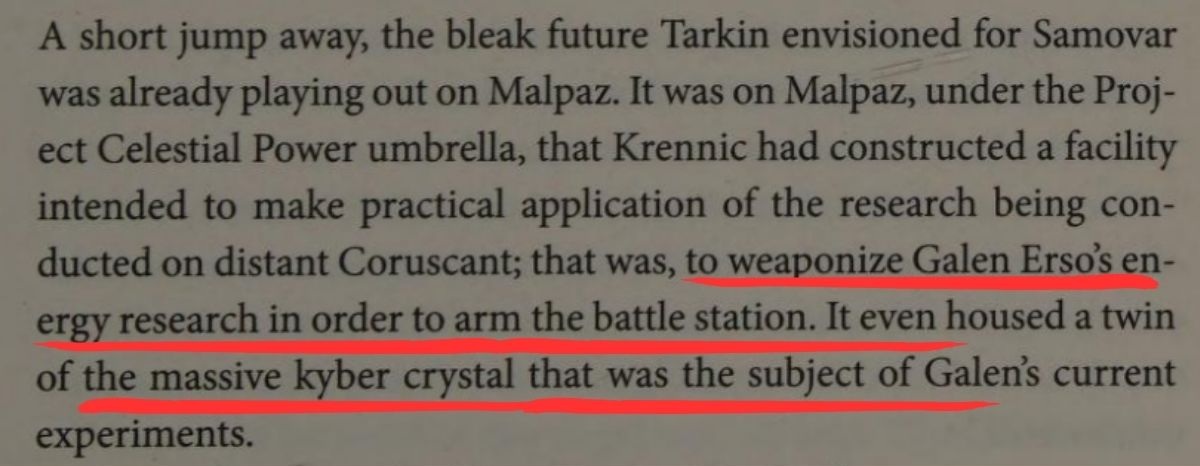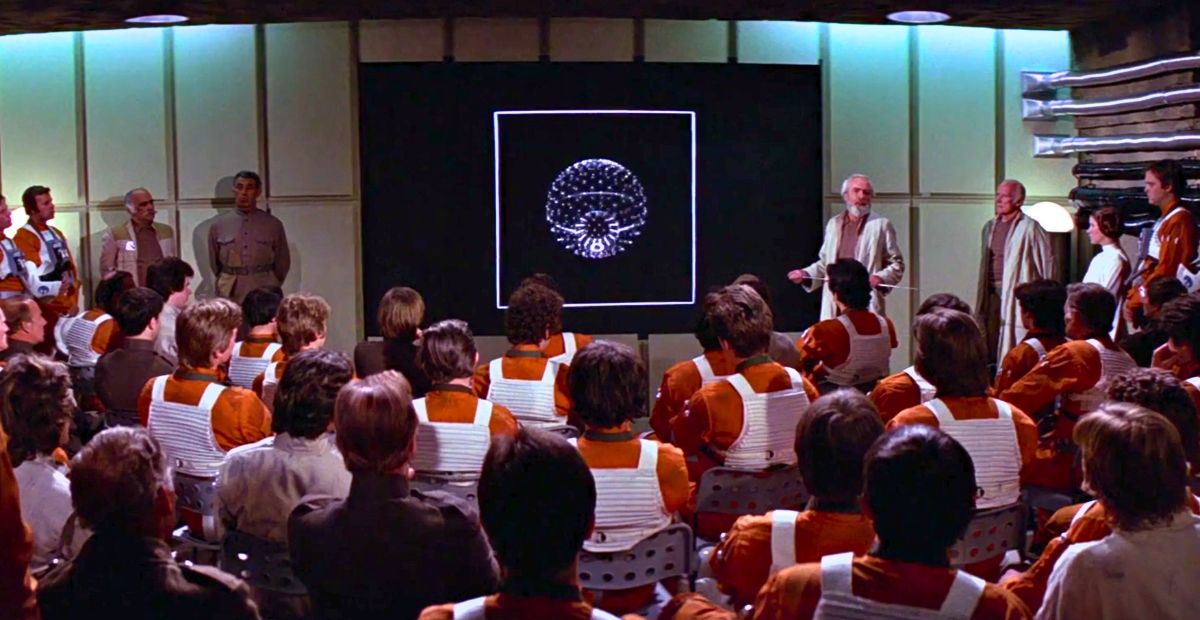Thanks to Rogue One, we finally understand how the Rebels got their hands on the Death Star blueprints, and in A New Hope, we see exactly how they used those plans to find the superweapon’s one fatal weakness.
But that brings up an interesting question: if the Rebels had the entire blueprint, why didn’t they just build their own? Imagine if, by the time of Return of the Jedi, the Rebellion had its own Death Star to face off against the Empire’s second one.
1. The Blueprints Showed How to Destroy It, Not How to Build It
The plans stolen in Rogue One weren’t some kind of “build-your-own Death Star” manual. They were highly technical engineering schematics, layouts, reactor designs, and weapon subsystems, meant for Imperial scientists and construction crews who were already decades into the project.
For the Rebels, that data was useless for replication but priceless for one reason: it revealed how to destroy it. Galen Erso didn’t smuggle out step-by-step instructions for making a planet-killer; he hid a trap inside the reactor’s core, a deliberate flaw that only someone studying the schematics could notice.
When Jyn Erso, Cassian, and the Rogue One team transmitted those plans to the fleet above Scarif, the engineers at Yavin IV weren’t trying to copy the Death Star. They were hunting for its weakness. As General Dodonna and his analysts later discovered, that weak point was the small thermal exhaust port, the one path that could trigger a chain reaction to the main reactor.
2. The Empire Controlled the Only Materials Capable of Building One
The Death Star required resources that only the Empire could extract and control, kyber crystals on an unimaginable scale, massive orbital construction yards like Geonosis and Scarif, and the labor of countless enslaved workers from conquered worlds. Even entire planetary economies were bent toward a single purpose: feeding the machine that would build the Death Star.
The Rebels, by contrast, were a scattered alliance of freedom fighters — a fleet of hidden bases, smugglers, and volunteers. They could barely keep fuel and starfighters supplied, let alone mine, transport, and refine materials for a battle station the size of a small moon.
And even if they tried, the secrecy alone would’ve been impossible. The Empire had eyes and spies in every major system, and any attempt to gather resources on that scale would have drawn attention immediately. One Imperial probe, one intercepted transmission, and the entire project would be wiped out before it ever left the drawing board.
3. The Rebellion Had No Resources, No Funding, and No Time
Even if the Rebels somehow wanted to build their own Death Star, the reality is that it would’ve been completely impossible. Constructing something that massive would take decades, trillions of credits, and the combined industrial output of dozens of star systems. The Empire had all of that, the Rebellion didn’t.
We actually get a taste of this struggle in Andor. Even at its earliest stage, the Rebellion could barely fund small-scale operations, let alone sustain a massive construction effort. In Season 2, we see how the various Rebel cells, from Mon Mothma’s political network to Luthen Rael’s underground contacts, constantly scramble for money, ships, and supplies. Every blaster, every stolen part, every covert mission had to be justified.
If a single heist like the Aldhani job took months of planning and cost multiple lives just to steal one Imperial payroll, imagine trying to secretly mine kyber crystals, forge superlaser arrays, and weld kilometer-wide hull plates together. The Rebellion couldn’t even fuel its starfighters without Imperial corruption or stolen credits, a Death Star-sized project would’ve been laughably out of reach.
Even after the fall of the Empire, the New Republic barely had enough unity or budget to maintain a fleet, let alone fund a superweapon. Building a Death Star-sized station would have taken years the Rebels simply didn’t have. Every second of the war mattered — while the Empire poured billions into building terror, the Alliance poured everything into surviving one more day.
4. Galen Erso’s Work Wasn’t Reproducible
One of the biggest reasons the Rebels could never have built their own Death Star is simple, Galen Erso. His manipulation of kyber crystal energy wasn’t just advanced engineering; it bordered on Force-level intuition. He understood how to channel and stabilize the raw, living energy inside kyber, something even the Jedi only studied for their lightsabers, never to this scale.
Without Galen, the weaponized superlaser was impossible. The Empire spent years trying to refine his work, and even with unlimited funding and slave labor, the project was plagued by disasters. Test reactors exploded, energy conduits melted down, and countless engineers died in failed experiments. Galen’s genius, and his hidden sabotage, were the only reasons the system ever worked at all.
Even the Empire, with endless funding, slave labor, and entire star systems worth of resources, couldn’t make the superlaser work without Galen. Across the galaxy, project sites failed again and again. The Rogue One novel even illustrates this with one of Krennic’s early test facilities:
“A short jump away, the bleak future Tarkin envisioned for Samovar was already playing out on Malpaz. It was on Malpaz, under the Project Celestial Power umbrella, that Krennic had constructed a facility intended to make practical application of the research being conducted on distant Coruscant; that was,to weaponize Galen Erso’s energy research in order to arm the battle station.”

The Empire kept trying to replicate Galen’s understanding of kyber, and every attempt collapsed without him. His insight into kyber resonance wasn’t teachable, wasn’t replicable, and wasn’t something any Imperial scientist could recreate.
The Rebels, on the other hand, didn’t have access to that data or the scientists capable of interpreting it. Galen’s research was fragmented, encrypted, and buried deep in Imperial systems. Even if they’d wanted to use it, they lacked the massive kyber reserves, the expertise, and the moral willingness to harness something so destructive.
In a way, Galen made sure no one could ever build another Death Star — not even the good guys. His brilliance died with him, and that was by design.

